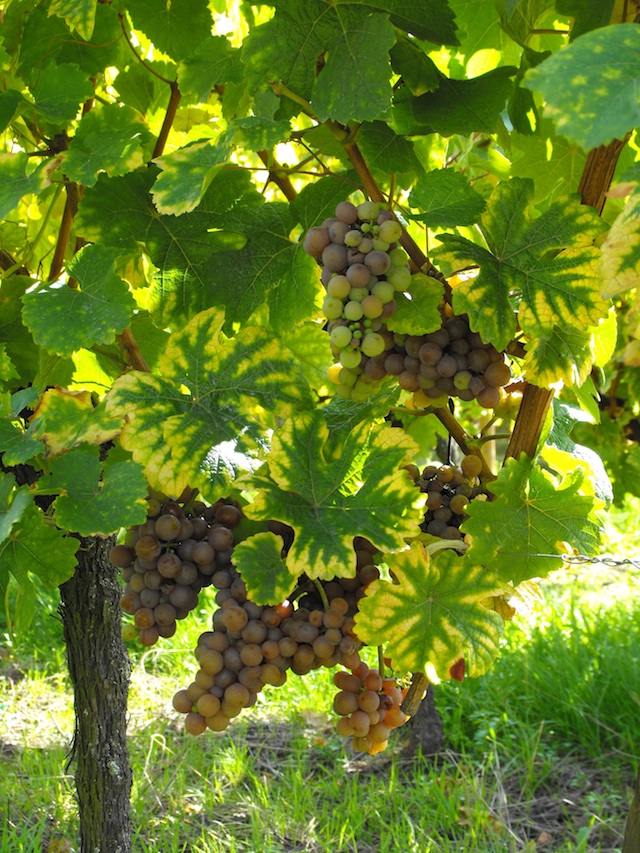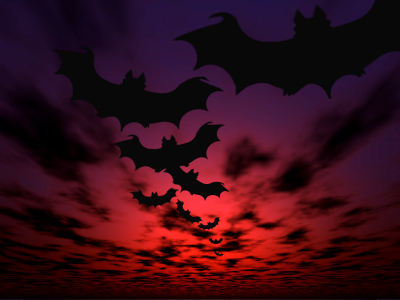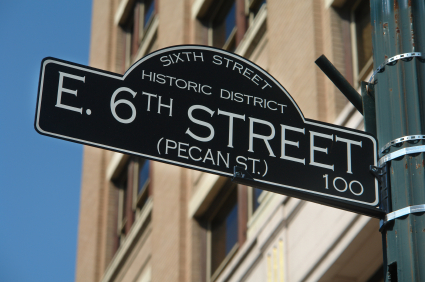
|
|
 |
||||||||||||||||||||
|
|
|||||||||||||||||||||
|
GOING BATTY IN TEXAS The Lone Star State has Another Reason to Shine: Its Abundant Bat Population By Erin Caslavka and Jon Deinzer  At just over 16 acres, “Old Tunnel” is the smallest Wildlife Management Area (WMA) in Texas; yet the abandoned railroad tunnel is home to a seasonal colony of an astounding 1-3 million bats. From May through October, the bats fly to Texas to roost, give birth to their live young, and nurse them to the point where they can fend for themselves before beginning their southerly migration back to Mexico. At just over 16 acres, “Old Tunnel” is the smallest Wildlife Management Area (WMA) in Texas; yet the abandoned railroad tunnel is home to a seasonal colony of an astounding 1-3 million bats. From May through October, the bats fly to Texas to roost, give birth to their live young, and nurse them to the point where they can fend for themselves before beginning their southerly migration back to Mexico.Every year the bats returning to Old Tunnel include pregnant females who’ll give birth to a single “pup,” usually in June. After the babies are born (which happens in nearby caves or underneath bridges), the moms will nurse them there until they’re old enough to move into the tunnel; so the bat population increases exponentially after the pups become juveniles (usually within 4-6 weeks of birth). There’s another surge in numbers when other bats join the colony on their way south from different northern locales. Most of the colony in the Old Tunnel area consists of Mexican free-tailed bats (so named because their tails hang freely between their hind legs), and each one weighs about as much as a dozen paperclips. But as anyone from Texas knows: it’s not the size of the dog in the fight; it’s the size of the fight in the dog. And these small mammals do a heck of a job consuming bugs, as they can eat the equivalent of their own body weight every night. On a recent trip to Fredericksburg, I decided to squeeze in a visit to Old Tunnel to see for myself what all the fuss was about. I’d never witnessed a “mass ascension” of bats, but from what I’d been told, it was a sight unlike any other. So I tossed on my sweater and left the parking lot of the Hangar Hotel where I was staying - a 50-room boutique hotel that’s tucked inside of a recreated WWII airplane hanger. I arrived at the WMA (about 11 miles outside of town) just before dusk and opted to pay the extra admission charge to enter the lower viewing area, which would give me a closer spot from which to see the bats. I’d also have the opportunity to hear the docent’s short lecture about the tunnel and the bats that reside there. The tunnel was constructed in 1913 for a railroad that at one time connected Fredericksburg with San Antonio. But by the 1940s, the tracks were moved and the tunnel’s use ceased to be important to any humans. That’s when the bats moved in. As I sat surrounded by visitors (and some locals) from every age group, the volunteer staffer provided us with some really cool information that somehow I’d never learned about bats. For instance: mother bats locate their babies by using solely their sense of sound, since each baby has a unique “squeak.” I also learned that because on any given night each bat can eat its weight in insects, the whole colony can consume over 25 tons of moths per night! And by the time the bats return to their roosting spot (sometime between midnight and daybreak), they’ll have traveled an average of 25-30 miles. Local farmers owe a debt of gratitude to the Old Tunnel bat colony,  since many of the bugs they consume are considered agricultural pests: cutworms, corn-borers and webworm moths are among the tasty treats on their nightly menu. (It’s been estimated that 80% of the bats’ diet consists of these crop-destroying bugs.) And with nature doing so much by way of pest control, imagine how much less pesticides and insecticides are needed in the surrounding area as a result of the bats’ active participation. since many of the bugs they consume are considered agricultural pests: cutworms, corn-borers and webworm moths are among the tasty treats on their nightly menu. (It’s been estimated that 80% of the bats’ diet consists of these crop-destroying bugs.) And with nature doing so much by way of pest control, imagine how much less pesticides and insecticides are needed in the surrounding area as a result of the bats’ active participation.As someone who can’t stand bugs (mostly because they love me), I was also quite happy to hear that bats prey on mosquitos which - it being Texas, and all - there are plenty of. Now duly primed on the basic habits and positive impact of the Old Tunnel bat colony, we were all ready to see them roar. And with that, a hushed silence fell over the gathered crowd. At the tipping point from day-into-night, a slow, swirling vortex of a few dozen bats slowly began to emerge from the tunnel. Then, gradually, as an updraft of air started to form, more and more bats spilled out of the tunnel until the darkening sky was filled to capacity with these hungry, bug-seeking night fliers. They seemed to emerge as a single unit - an undulating, black ribbon of life - wings beating furiously against the warm air currents that would carry them away on their feeding frenzy. After first finding water, the colony disperses to form smaller feeding groups. (But lest you think that the bats are the only ones on the hunt, oftentimes owls and red-tailed hawks lie in wait to pluck them out of the sky.) The immense amount of bugs that are eaten by the bats naturally results in an abundance of guano (or bat droppings), which, until oil was discovered in the Lone Star State, was at one time its number one mineral export. Guano, as it turns out, is an important source of fertilizer and is still sold in some places as a pricey, organic option. (As a side note: the concentration of ammonia within the tunnel has made harvesting the guano from within too difficult to accomplish.)  Watching the swarming bat colony as it made its serpentine way southeast towards the Guadalupe River, I marveled at the singleness of purpose that drives these tiny mammals on their nightly quest, and also mourned the loss of so many other bats that have been lost to “white-nosed syndrome,” a deadly disease that can wipe out entire hibernating bat colonies. We need to fully appreciate the role these animals play in our agriculture as both insect-eaters and pollinators, and support the role of conservationists in keeping the bat colonies healthy and productive. Watching the swarming bat colony as it made its serpentine way southeast towards the Guadalupe River, I marveled at the singleness of purpose that drives these tiny mammals on their nightly quest, and also mourned the loss of so many other bats that have been lost to “white-nosed syndrome,” a deadly disease that can wipe out entire hibernating bat colonies. We need to fully appreciate the role these animals play in our agriculture as both insect-eaters and pollinators, and support the role of conservationists in keeping the bat colonies healthy and productive.Back in Fredericksburg, I enjoyed a (bug-free!) stroll down Main Street before meeting up with a pal. As I stopped along the way to do some window shopping, I found myself enjoying the kitschy buildings and storefront displays. Popping into the Fredericksburg Brewing Company, I was pleasantly surprised to discover another fun place to stay as the brewery has a dozen rooms for overnight guests. Feeling sufficiently warm and fuzzy from the combination of good company and a good brew, I couldn’t help but reflect back on those furry, winged animals and their contribution to the local community. Even though they might only be part-time residents, the Old Tunnel bat colony is nevertheless a vital part of the fabric of the town. FAST FACTS Fredericksburg Chamber of Commerce 302 E. Austin St. Fredericksburg, TX 78624 (830) 997-6523 www.fredericksburg-texas.com Fredericksburg Brewing Company 245 Main Street Fredericksburg, TX 78624 (830) 997-1646 www.yourbrewery.com Hangar Hotel 155 Airport Rd. Fredericksburg, TX 78624 (830) 997-9990 www.hangarhotel.com Old Tunnel WMA 10619 Old San Antonio Rd. Fredericksburg, TX 78624 (830) 978-2287 www.tpwd.state.tx.us/huntwild/hunt/wma/find_a_wma/list/?id=17 Aerial Acro"bat"ics in Austin  “Excuse me. We’re here to see the bats,” she said with a note of breathlessness. “Excuse me. We’re here to see the bats,” she said with a note of breathlessness. “It’s too late in the season,” he answered with a sense of proprietary arrogance. “They’ve all left for Mexico.” With a knowing smile that revealed she was way too smart to take a dismissive response from a surly concierge on first utterance, she asked “Are you sure they’re gone?” “Yes. I’m sure. But you might find a bat or two left, if you hurry.” We got the name of the location - Congress Avenue - and enough general information to get us there. To say that the drive through Austin as the sun was threatening to descend for the day was not unlike the chase scene in Bullitt would not be an exaggeration. (Well, maybe a little.) As we sped off on our way towards the bridge, we rounded a downtown street corner just in time to...be stopped by a passing parade that now separated us from the bridge. “What are the odds?” she asked. “This is pretty random,” I answered. But minutes later the entourage passed by and we were free to go. We zigged, we zagged, we prayed that we would make it there on time and then finally we crossed the bridge and parked on the other side, just as the sun was setting over the Austin skyline. Bounding out of our parked rental car, we ran (make no mistake: we run for bats, in this household) to - the wrong side of the bridge! But my tireless navigator quickly realized our faux pas and we jogged over to the other side of the bridge, where we were hit by the unmistakable smell of bat guano. Hot cotton candy with lots of dirt thrown on it is pretty much the only way I can describe it; which brought back with it memories of that time at the county fair when I was six... But I digress. Back at bat central, we’re now on the correct side of the bridge and there’s a party goin’ on. People are lined up alongside the railings, chatting amongst themselves like excited school kids on a field trip. “Did you know that Austin has the largest urban bat colony in North America?,” a man standing next to us asks. We did not. “They’re here from mid-March to early November,” says another. “And then it’s off to Mexico.” Sounds like a good plan to me; allowing for the best weather year-round. We looked down into the water below and spot a half-dozen kayaks bobbing in the water, their occupants sitting low in their vessels. Nearby, a sightseeing boat putters around in the water obviously waiting for the bat emergence as well. And then, a small black object about the size of a hummingbird starts to flutter.  It makes its way out from beneath the bridge, then a second, third, tenth, hundredth winged creature follows. They begin to pour into the sky like bits of black confetti tossed upwards. It makes its way out from beneath the bridge, then a second, third, tenth, hundredth winged creature follows. They begin to pour into the sky like bits of black confetti tossed upwards.To say that our concierge was horribly wrong about the bats being gone would be an understatement of Herculean proportions. Thousands and thousands of bats poured out from beneath that bridge just below our feet, blackening an already dark sky. And still they came - for what seemed like an eternity, but in reality was probably no more than 30 minutes. But in that short bit of time magic happened, as it sometimes does, and we got to experience something truly awesome - right there in Austin. FAST FACTS Austin Convention and Visitors Bureau 301 Congress Ave., #200 Austin, TX 78701 GO-AUSTIN www.austintexas.org Austin City Guide (bat viewing info) www.austincityguide.com/content/congress-bridge-bats-austin.asp Photo credits: iStockphoto.com; Erin Caslavka |
|
|
|
|
| Site Map |